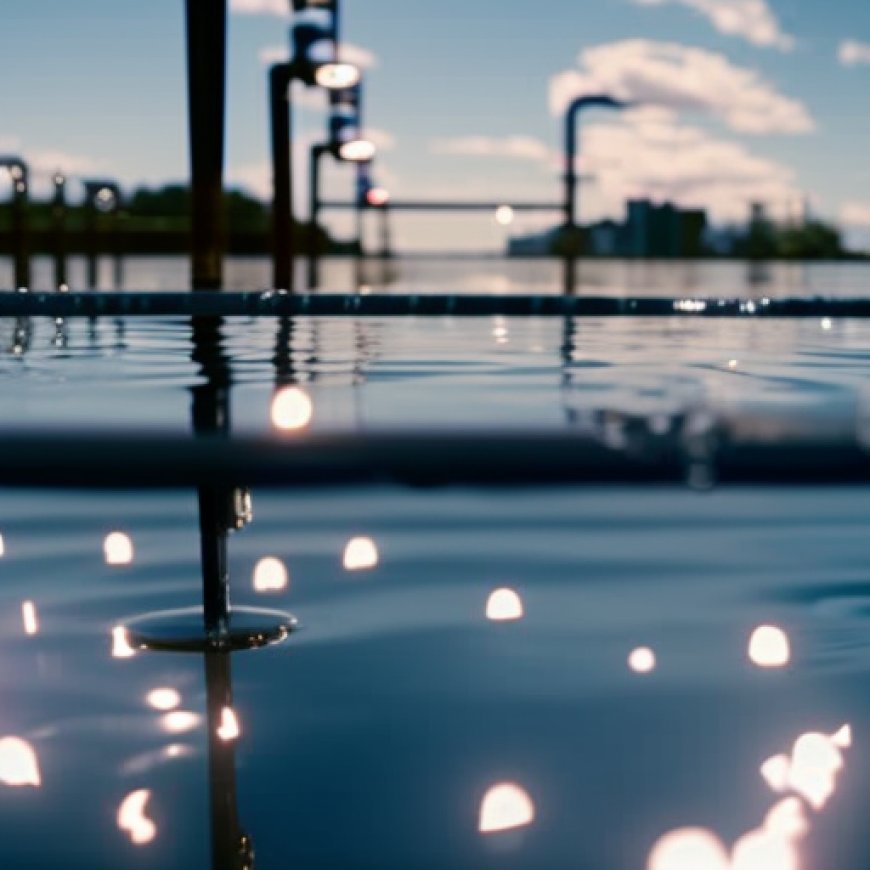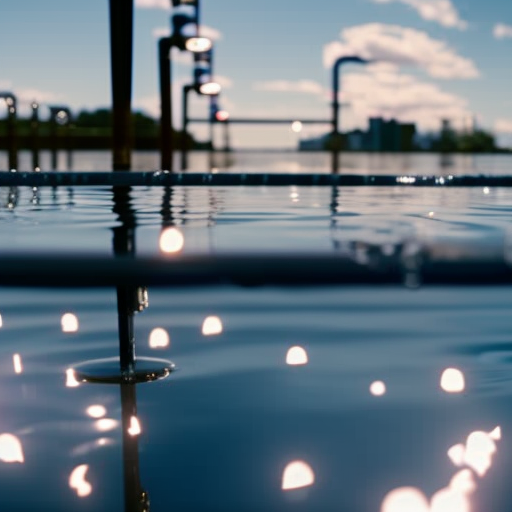30 more drinking water systems in RI may need to filter out PFAS under new EPA rules
PFAS in dozens of Rhode Island drinking water systems above EPA standards The Providence Journal


Additional Public Drinking Water Systems in Rhode Island May Need to Install Filters for “Forever Chemicals”
PROVIDENCE – About 30 additional public drinking water systems in Rhode Island may need to install systems to filter out so-called “forever chemicals” that have been linked to cancers and other health problems under new federal rules announced this week.
The number comes on top of the 14 water systems in Rhode Island that are already working on treatment plans after tests of drinking water samples found levels of per- and polyfluorolalkyl substances, or PFAS, that exceeded a state standard passed into law two years ago, according to the state Department of Health.
What are ‘Forever Chemicals’?
The dangers of PFAS, which are used in everything from firefighting foam to cookware to coatings on rain jackets, have long been suspected. Recent studies have associated exposure to the substances with developmental delays in children, immune-system problems and kidney, testicular and prostate cancers. The chemicals, which get their “forever” moniker because they don’t break down in the environment, are known for tainting groundwater supplies, most commonly through the use of foams to control fires containing flammable liquids.
Federal Rules Will Supplement State Law on PFAS
Eight years ago, in the absence of action at the federal level, states started stepping in to regulate limits of the toxic chemicals in drinking water. Rhode Island became one of the latest in 2022 when the General Assembly passed a law regulating some of the most common substances in the PFAS family.
Last year, in response to longstanding calls for a national standard, the U.S. Environmental Protection Agency proposed legally binding limits on the same six PFAS chemicals in the Rhode Island law, as well as two others that are not common in the state. The agency announced the adoption of the rules on Wednesday – for the first time requiring water systems to remove them from supplies.
U.S. Sen. Jack Reed, D-RI, described the action as “historic.”
“Every American should be able to turn on their tap and access clean, safe drinking water,” he said in a statement.
Remediation Underway at Water Systems with PFAS Levels Above State Limits
The Rhode Island PFAS law required all 170 of the state’s major drinking water suppliers to test for the chemicals by July 1 last year and report their results to the Health Department by Aug. 10. The systems used by the vast majority of people in Rhode Island were found to be in compliance with the state standard. Additionally, more than half the systems did not detect any levels of PFAS.
However, levels were found to exceed the standard in 14 water systems, which collectively serve about 3% of the state’s population that uses public water supplies. In some cases, consumers’ exposure to PFAS may not match testing levels because systems blend water from multiple wells. That’s the case at the University of Rhode Island, the largest system that detected levels above the state standard.
The Health Department determined that 13 systems needed to sign consent agreements setting out milestones and deadlines for installing a treatment system or implementing some other type of remedy. The agreements took into account the nature of each system’s PFAS problem, financing needs and regulatory approvals, among other issues.
The systems must continue to test water samples once every quarter until they can demonstrate that PFAS concentrations are within the standard.
“In the meantime, these water systems have provided notice to their consumers and some of these systems were able to turn off [wells] with high PFAS, install point-of-use filters or provide bottled water as a temporary measure until the final remedy is ready,” Wendelken said.
SDGs, Targets, and Indicators
SDGs Addressed:
- SDG 6: Clean Water and Sanitation
- SDG 14: Life Below Water
- SDG 15: Life on Land
Targets Identified:
- Target 6.1: By 2030, achieve universal and equitable access to safe and affordable drinking water for all.
- Target 6.3: By 2030, improve water quality by reducing pollution, eliminating dumping, and minimizing release of hazardous chemicals and materials.
- Target 14.1: By 2025, prevent and significantly reduce marine pollution of all kinds, particularly from land-based activities, including marine debris and nutrient pollution.
- Target 15.1: By 2020, ensure the conservation, restoration, and sustainable use of terrestrial and inland freshwater ecosystems and their services.
Indicators:
- Indicator 6.1.1: Proportion of population using safely managed drinking water services.
- Indicator 6.3.2: Proportion of bodies of water with good ambient water quality.
- Indicator 14.1.1: Index of coastal eutrophication and floating plastic debris density.
- Indicator 15.1.1: Forest area as a proportion of total land area.
Analysis:
The issues highlighted in the article are connected to several Sustainable Development Goals (SDGs). The main SDG addressed is SDG 6: Clean Water and Sanitation, which aims to ensure access to clean water and sanitation for all. The article discusses the need for public drinking water systems in Rhode Island to install filtration systems to remove “forever chemicals” that have been linked to health problems. This aligns with Target 6.1 of SDG 6, which focuses on achieving universal and equitable access to safe and affordable drinking water for all.
In addition, the article also touches on SDG 14: Life Below Water and SDG 15: Life on Land. The “forever chemicals” mentioned in the article, known as PFAS, are known for tainting groundwater supplies and can contribute to marine pollution when they enter water bodies. This relates to Target 14.1 of SDG 14, which aims to prevent and reduce marine pollution from land-based activities. Furthermore, the article mentions the need to regulate and reduce the release of these chemicals into the environment, which aligns with Target 6.3 of SDG 6 and its focus on improving water quality by reducing pollution and minimizing the release of hazardous chemicals.
The article provides specific targets that can be identified based on its content. These include Target 6.1 (universal access to safe drinking water), Target 6.3 (improving water quality), Target 14.1 (reducing marine pollution), and Target 15.1 (conservation and sustainable use of ecosystems).
The article mentions indicators that can be used to measure progress towards the identified targets. Indicator 6.1.1 (proportion of population using safely managed drinking water services) can be used to measure progress towards achieving universal access to safe drinking water (Target 6.1). Indicator 6.3.2 (proportion of bodies of water with good ambient water quality) can be used to measure progress towards improving water quality (Target 6.3). Indicator 14.1.1 (index of coastal eutrophication and floating plastic debris density) can be used to measure progress towards reducing marine pollution (Target 14.1). Indicator 15.1.1 (forest area as a proportion of total land area) can be used to measure progress towards the conservation and sustainable use of ecosystems (Target 15.1).
Table: SDGs, Targets, and Indicators
| SDGs | Targets | Indicators |
|---|---|---|
| SDG 6: Clean Water and Sanitation | Target 6.1: By 2030, achieve universal and equitable access to safe and affordable drinking water for all. | Indicator 6.1.1: Proportion of population using safely managed drinking water services. |
| SDG 14: Life Below Water | Target 14.1: By 2025, prevent and significantly reduce marine pollution of all kinds, particularly from land-based activities, including marine debris and nutrient pollution. | Indicator 14.1.1: Index of coastal eutrophication and floating plastic debris density. |
| Target 6.3: By 2030, improve water quality by reducing pollution, eliminating dumping, and minimizing release of hazardous chemicals and materials. | Indicator 6.3.2: Proportion of bodies of water with good ambient water quality. | |
| SDG 15: Life on Land | Target 15.1: By 2020, ensure the conservation, restoration, and sustainable use of terrestrial and inland freshwater ecosystems and their services. | Indicator 15.1.1: Forest area as a proportion of total land area. |
Behold! This splendid article springs forth from the wellspring of knowledge, shaped by a wondrous proprietary AI technology that delved into a vast ocean of data, illuminating the path towards the Sustainable Development Goals. Remember that all rights are reserved by SDG Investors LLC, empowering us to champion progress together.
Source: providencejournal.com

Join us, as fellow seekers of change, on a transformative journey at https://sdgtalks.ai/welcome, where you can become a member and actively contribute to shaping a brighter future.
![Water lines are installed in a neighborhood in Burrillville in 2019 after the town's drinking water was contaminated with PFAS from firefighting foam. [Bob Breidenbach/The Providence Journal, file]](/gcdn/presto/2022/06/08/NPRJ/c548c844-68d7-4a8c-850c-de8c3178f014-RIPRO-013021-NE_PFAS_WATER.jpg?width=660&height=463&fit=crop&format=pjpg&auto=webp)







